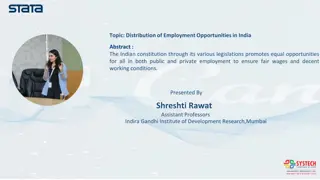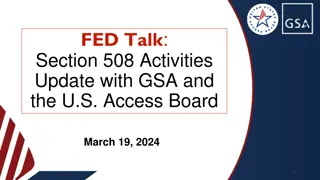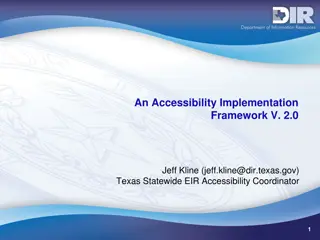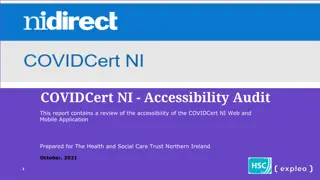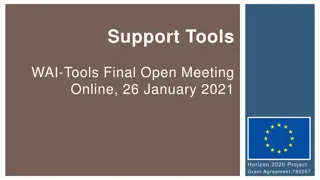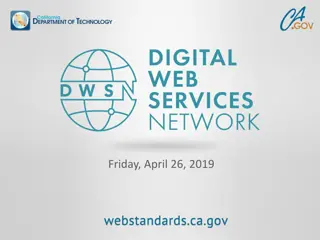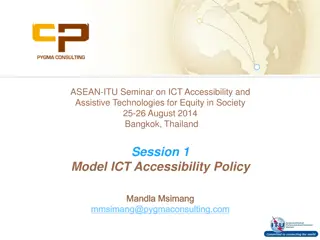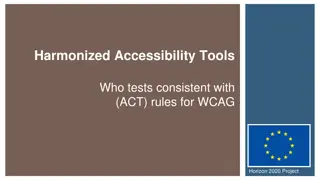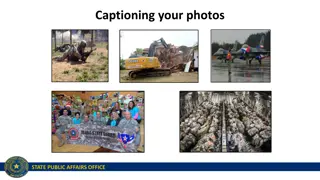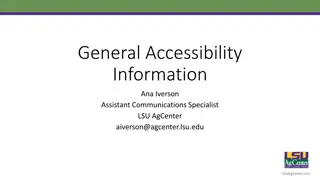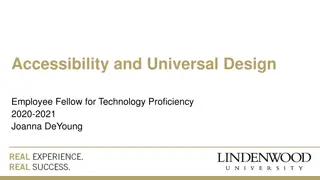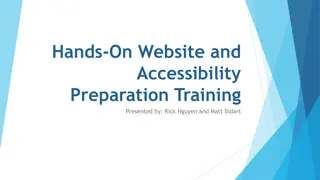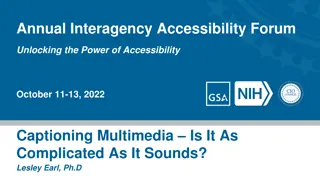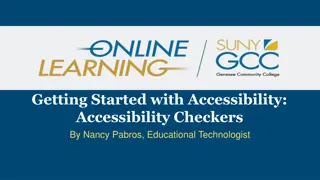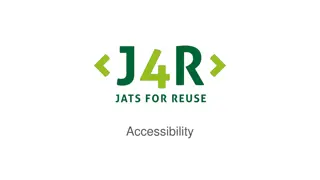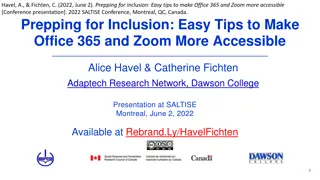Promoting Accessibility Through Captioning: A Guide for Equal Opportunity
Virginia Tech is committed to equal opportunity for individuals with disabilities, promoting accessibility through the C.A.L.M. campaign. The campaign emphasizes compliance with disability laws and guidelines, ensuring equal access to electronic and information technology. Captions play a vital role in making video content available to all, serving various purposes such as supporting comprehension, accessibility for different audience members, and improving search engine optimization. The guide provides information on getting started with captioned content creation, essential captioning practices, and the importance of adhering to standards for inclusivity and accessibility.
Download Presentation

Please find below an Image/Link to download the presentation.
The content on the website is provided AS IS for your information and personal use only. It may not be sold, licensed, or shared on other websites without obtaining consent from the author. Download presentation by click this link. If you encounter any issues during the download, it is possible that the publisher has removed the file from their server.
E N D
Presentation Transcript
Keep C.A.L.M And Caption On Virginia Tech is committed to equal opportunity in employment and education for individuals with disabilities and complies with the Americans with Disabilities Act, as amended, and Section 504 of the Rehabilitation Act of 1973. The C.A.L.M. campaign broadly promotes accessibility and supports compliance with VT Policy 7215 thereby creating a campus community with equal access opportunity to electronic and information technology (EIT). This is accomplished through adherence to Section 508 of the Rehabilitation Act and conformance with Web Content Accessibility Guidelines 2.0 AA (WCAG).
Captions make video available to ALL ALL Closed Captions serve many purposes: Watching video in sound sensitive environments Supporting additional comprehension Accessibility for deaf, hard of hearing, and multilingual audience members Improving search engine optimization For More: http://bit.ly/UseCaptions
How do I get started? 1. Choose Captioned Content 2. Create Captioned Content using Kaltura Video.vt.edu Canvas.vt.edu (My Media) For More: http://bit.ly/OrderCaptions
Captioning Must Haves Timings synchronized to speaker Identify all speakers Identify all non-speech audio [ ] Display time 2 to 5 sec 32 characters per line (48 max) No more than 2 lines per caption Avoid line breaks in phrases and descriptions These are just the basics, for more details always go back to the manual For More: www.captioningkey.org 4


